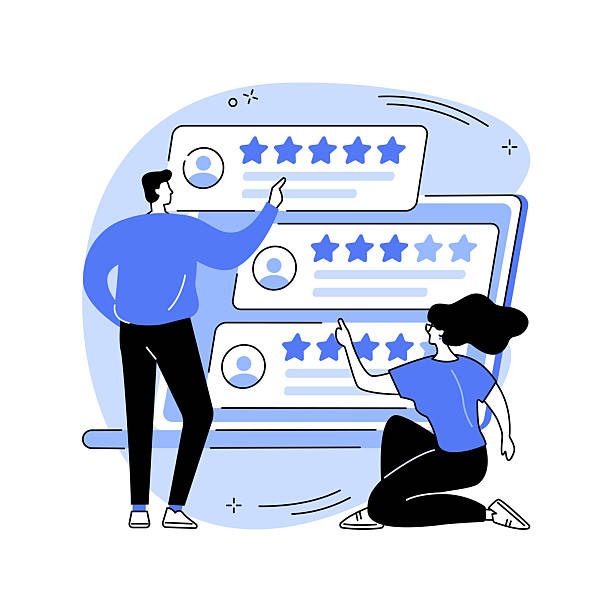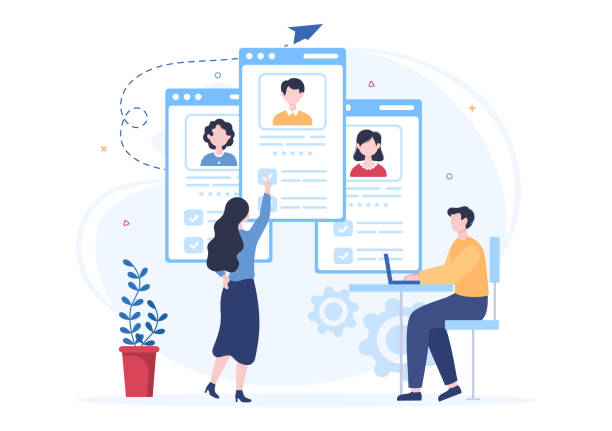Introduction to the Importance of Multilingual Website Design in the Global Era

In today’s world, where geographical boundaries have blurred thanks to the internet, an online presence is vital for any business.
But is a presence in just one language enough? The answer is definitely no.
#Multilingual_Website_Design is no longer a competitive advantage; it’s an undeniable necessity for reaching global audiences and expanding markets.
This approach allows you to connect with your potential customers worldwide in their native language, which in turn leads to increased trust, improved user experience, and ultimately, higher conversion rates.
Creating a multilingual website is not just about translating content; it’s a complex process involving cultural, technical, and SEO localization that must be done with great care.
Did you know that many internet users prefer to shop or get information from websites that are provided in their native language? This statistic clearly shows the importance of investing in multilingual website development and is a big step towards reaching emerging markets and establishing your brand’s position on a global scale.
This chapter, as an initial guide, explains the various dimensions of this need and paves the way for a deeper understanding of the topic.
Are you annoyed by losing customers who have visited your site to make a purchase?
Rasaweb is your specialized solution for a successful online store.
✅ Significantly increase your online sales
✅ Build trust and professional branding with customers⚡ Get a free consultation from Rasaweb experts!
Why is Multilingual Website Design a Necessity? Analyzing Global Opportunities
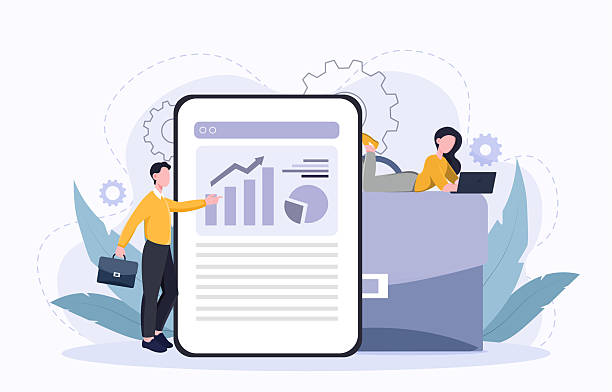
The answer to why multilingual website design is no longer a luxury choice lies in a precise analysis of global market opportunities.
#Global_Expansion and #Access_to_New_Audiences are two main pillars of any ambitious business strategy.
Approximately 75% of internet users do not speak English.
This statistic alone shows what immense potential is lost by limiting your site to a single language.
A multilingual website not only helps you access markets such as Asia, Europe, or South America but also increases customer loyalty by building stronger relationships.
Research has shown that users are more inclined to interact with content presented in their language, even if they are proficient in another language.
This particularly leads to a significant increase in sales in the e-commerce sector.
Competitiveness in the global market requires a perspective beyond domestic borders, and a multilingual website is a powerful tool for this purpose.
This is an analytical strategy that helps you increase your market share internationally and outperform competitors who have not yet prioritized local languages.
Are you willing to miss out on this golden opportunity?
Technical and Architectural Aspects in Multilingual Website Design

When it comes to multilingual website design, technical and architectural aspects play a pivotal role.
#URL_Structure and #Content_Management are among the most important of these aspects.
Choosing the best URL structure (subdomain, subdirectory, or URL parameters) for different language versions not only affects user experience but is also crucial for SEO and website ranking in search engines.
For example, Google and other search engines usually prefer subdirectories (like yoursite.com/fa) for better SEO.
Using hreflang tags to inform search engines about different language versions of a page is essential.
Content management in a multilingual system requires a powerful Content Management System (CMS) that natively supports multilingual capabilities or has suitable plugins for it.
Some CMSs like WordPress (with plugins such as WPML or Polylang) and Drupal are good options for multilingual content management.
Also, attention to text direction (RTL/LTR) for languages like Persian and Arabic, which are written from right to left, is of high importance in CSS and HTML design.
These specialized and technical issues form the foundation of a stable multilingual web platform.
The table below compares common URL structure options for multilingual websites:
| URL Structure Type | Example | Advantages | Disadvantages |
|---|---|---|---|
| Subdirectories | example.com/en/ | Strong SEO, easier management in Google Search Console | May require changes to server directory structure |
| Subdomains | en.example.com | Complete separation of versions, hosting on different servers | Requires separate SEO management for each subdomain |
| Country Code Top-Level Domains (gTLDs) | example.de, example.fr | Best for regional SEO, high sense of locality | Higher cost and management, requires purchasing multiple domains |
Multilingual SEO: The Secret to Visibility in International Markets
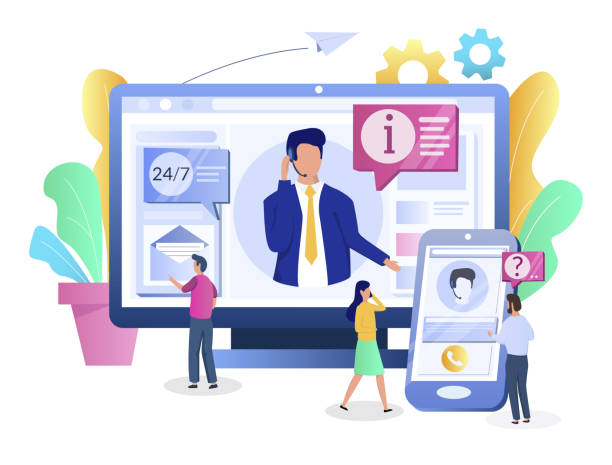
Multilingual SEO is an integral part of successful multilingual website design.
#Search_Engine_Optimization in different languages goes beyond keyword translation.
This process includes local keyword research, content optimization for specific search queries in each language, and the correct use of hreflang tags.
Hreflang tags help search engines like Google identify and display the correct version of a page based on the user’s language and geographical region.
This prevents duplicate content issues and ensures that users are directed to their preferred language.
Additionally, acquiring relevant backlinks from local and authoritative sites in each language significantly helps strengthen domain authority and ranking in international search results.
A comprehensive multilingual SEO strategy should include creating separate XML sitemaps for each language and submitting them to search engines.
Finally, tracking site performance using tools like Google Analytics and Google Search Console for each language separately allows you to identify and improve the strengths and weaknesses of your SEO strategy.
The ultimate goal is for your website to not only be available in multiple languages but also to rank well in search engines in each of these languages.
Are you frustrated with the low conversion rate of your e-commerce site? Rasaweb transforms your e-commerce site into a powerful tool for attracting and converting customers!
✅ Significantly increase visitor-to-buyer conversion rates
✅ Outstanding user experience to boost customer satisfaction and loyalty⚡ Get a free consultation from Rasaweb!
Content Localization Strategies: Beyond Mere Translation

Content localization in multilingual website design is a specialized process that goes far beyond machine translation or even word-for-word translation.
#Cultural_Localization and #Content_Adaptation to the local audience form the core of this strategy.
Content that is successful in one culture may be not only ineffective but even offensive in another.
Localization involves adapting terminology, units of measurement, dates, numerical formats, currencies, images, and even colors to the cultural preferences and norms of the target region.
For example, the color red symbolizes good luck in some cultures, while in others, it can signify danger.
Well-localized content creates a sense of familiarity and comfort for the user, leading to increased engagement and trust.
To achieve this goal, collaboration with native-speaking translators and cultural experts who have a deep understanding of the target market is essential.
They can ensure that your message is not only conveyed correctly but also resonates with the audience.
This analytical and explanatory approach to localization guarantees the success of your multilingual website in attracting and retaining international customers.
User Experience (UX) in Multilingual Websites: Challenges and Solutions

User Experience (UX) in multilingual website design faces unique challenges that require creative solutions.
#Site_Navigation and #Language_Selection are two key elements in this area.
Users should be able to easily find and select their desired language.
This is usually done using a prominent language switcher (such as country flags or language codes) in the header or footer of the site.
Also, the design must properly support right-to-left (RTL) for languages like Persian or Arabic, and left-to-right (LTR) for other languages; this includes text direction, element layout, and even icon orientation.
Attention to fonts and typography is also crucial, as each language requires its specific fonts that ensure proper readability.
Website loading speed must also be optimized across all language versions, as users in different regions of the world may have access to the internet at varying speeds.
Finally, user testing with native speakers in each region is the best way to ensure the delivery of a seamless and engaging user experience.
This guiding and explanatory approach ensures that users of any language feel comfortable and satisfied interacting with your website.
Key Tools and Platforms for Multilingual Website Design
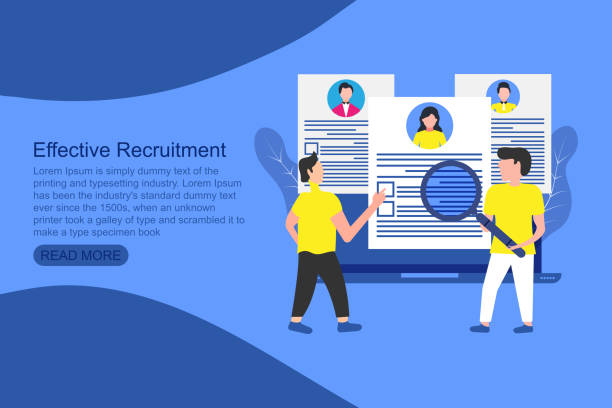
Choosing the right tools and platforms is a fundamental step in successful multilingual website design.
#Content_Management_Systems (CMS) and #Translation_Plugins are among the most important of these tools.
WordPress, Joomla, and Drupal are popular CMSs that offer powerful multilingual capabilities through specialized plugins and modules.
For WordPress, plugins like WPML (WordPress Multilingual Plugin) and Polylang are among the most well-known, providing the ability to translate posts, pages, categories, and even themes.
WPML is considered a specialized option for large projects due to its comprehensive support and advanced features, while Polylang is suitable for smaller starts due to its simplicity and free nature.
E-commerce platforms like WooCommerce (in WordPress) also gain multilingual capabilities with related plugins.
The choice of the right tool depends on project needs, budget, and the technical level of the development team.
Investing in quality tools, in the long run, leads to time and cost savings, as well as providing a stable and efficient multilingual website.
This is a practical guide to choosing the right path.
The table below shows some popular Content Management Systems and multilingual plugins:
| CMS / Platform | Main Multilingual Plugin/Feature | Key Advantages | Suitable for |
|---|---|---|---|
| WordPress | WPML, Polylang | High comprehensiveness, large user community, flexibility | Corporate websites, blogs, small to medium online stores |
| Drupal | Native capabilities in Core | Powerful, scalable, high security, suitable for complex projects | Large government and organizational projects, complex websites |
| Joomla | Native capabilities in Core | Native support for multiple languages, relatively easy user interface | Small to large websites, portals |
Common Mistakes in Multilingual Website Design and Avoidance Strategies

On the path to multilingual website design, common mistakes can harm your efforts.
#Poor_Translation and #Ignoring_Local_SEO are among these issues.
One of the biggest mistakes is relying on machine translation without review by native translators.
This can lead to unnatural, inaccurate, or even humorous content that undermines your brand’s credibility.
The solution is to always use professional, native-speaking translators who have a complete understanding of the target market’s culture and idioms.
Ignoring local SEO for each language is also a major error; simply translating content does not guarantee ranking in local search results.
Keyword research must be conducted for each language, and content should be optimized accordingly.
Another mistake is not paying attention to the specific User Experience (UX) of each language, especially for right-to-left languages.
Changing site direction and element layout is very important.
Ignoring legal and data privacy requirements in different regions of the world can also create serious problems.
For example, GDPR regulations in Europe or CCPA in California require specific approaches to data collection and processing.
By being aware of these mistakes and following the analytical and guiding solutions mentioned, you can prevent potential problems and create a successful multilingual platform.
Is your e-commerce site ready to attract maximum customers and boost sales? Rasaweb revolutionizes your online business by designing modern and efficient e-commerce websites.
✅ Increased speed and improved SEO
✅ Excellent user experience on mobile and desktop⚡ Get a free e-commerce website design consultation from Rasaweb!
The Future of Multilingual Website Design: AI and Advanced Translation

The future of multilingual website design hinges on advancements in artificial intelligence and advanced translation.
#Artificial_Intelligence and #Instant_Translation are changing the web landscape.
While machine translation cannot yet fully replace human translators, AI-powered tools with machine learning and natural language processing capabilities are becoming more accurate and efficient every day.
These technologies can help automate the translation process for large volumes of content, significantly reducing localization time and cost.
Furthermore, we are witnessing the emergence of websites that use AI to dynamically deliver content based on the user’s language and geographical location.
This means a highly personalized user experience.
Real-time translation technologies are also advancing, which can facilitate international communication.
The good news is that with these advancements, the process of creating and managing an international website for businesses will become easier in the future, although the need for human oversight and cultural localization will remain.
These engaging yet analytical developments paint an exciting future for the field of web globalization.
Conclusion: A Big Step Towards Global Markets with a Multilingual Website
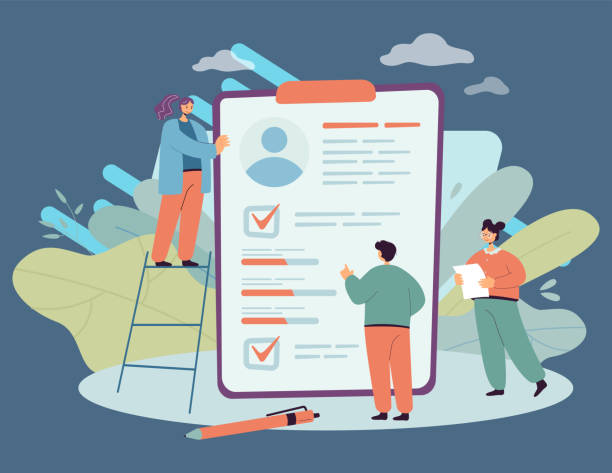
Overall, multilingual website design is more than a technical project; it’s a comprehensive strategy for global business expansion.
#Global_Reach and #Business_Growth are the ultimate goals of this endeavor.
From the importance of international SEO and cultural localization to choosing the right tools and avoiding common mistakes, each step requires precise planning and professional execution.
Investing in an efficient and optimized multilingual website not only opens up new opportunities for your business’s growth and development but also enhances your brand’s credibility on an international level.
By considering these points and leveraging the necessary expertise, you can create a platform that not only breaks down language barriers but also resonates with the hearts and minds of your global audience.
In an era where connectivity and globalization are paramount, having a multilingual website is no longer an option but a key to unlocking new markets and ensuring a bright future for your business.
This is an explanatory and educational summary that emphasizes the importance of this strategy for success in today’s world.
Frequently Asked Questions
| Question | Answer |
|---|---|
| What is a multilingual website? | A website whose content is available to users in several different languages. |
| Why should we design a multilingual website? | To expand reach to international audiences, increase website traffic, improve SEO in target markets, and provide a better user experience for non-Persian speakers. |
| What are the main methods for implementing a multilingual website? | Using subdomains (e.g., en.mysite.com), using subdirectories (e.g., mysite.com/en/), and using separate domains for each language (e.g., mysite.com and mysite.de). |
| Which implementation method is better for SEO? | Generally, using subdirectories (language folders) is often recommended due to the transfer of authority from the main domain to other languages. |
| What is the Hreflang tag and what is its use? | It is an HTML tag or HTTP Header that informs search engines which version of the page is suitable for which language or geographical region. This tag prevents duplicate content and improves SEO. |
| How is a Language Switcher designed? | Typically, using a dropdown menu, button, or flag in the header or footer of the site, which allows the user to select their preferred language. |
| Is automatic (machine) translation suitable for a multilingual website? | No, machine translation usually has low quality and many errors that can harm the site’s credibility. Human translation or a combination of human translation and machine editing is recommended. |
| What are the most important SEO tips in multilingual website design? | Correct use of Hreflang tags, having an appropriate URL structure for each language, translating titles and meta descriptions, translating core content, and internal linking between related language versions. |
| Should all website content be translated? | It depends on the strategy. Usually, the main and important content of the site should be translated. Less important sections or blogs may not need full translation. |
| What are the main challenges in multilingual website design? | Managing content in different languages, translation costs, technical issues related to URLs and language tags, theme compatibility with right-to-left (RTL) languages like Persian and Arabic, and managing multilingual SEO. |
And other services of Rasa Web Advertising Agency in the field of advertising:
Smart Advertising Campaign: A creative platform for improving SEO rankings with precise audience targeting.
Smart Digital Advertising: Designed for businesses looking to manage campaigns through precise audience targeting.
Smart Sales Automation: Revolutionize digital branding with the help of attractive UI design.
Smart Advertising Campaign: Professional optimization for customer acquisition using key page optimization.
Smart Marketplace: A dedicated service for growth in website traffic based on intelligent data analysis.
And over a hundred other services in the field of internet advertising, advertising consultation, and organizational solutions.
Internet Advertising | Advertising Strategy | Advertorials
Resources
The Importance of SEO in Multilingual Website DesignStrategies for Business Expansion in Global MarketsUser Experience in Multilingual Website DesignChallenges and Solutions for Website Localization
? To reach the peak in the digital world and experience fast and targeted website design, join Rasaweb Afarin Digital Marketing Agency.
📍 Tehran, Mirdamad Street, next to Bank Markazi, Kazeroun Jonoubi Alley, Ramin Alley, No. 6



